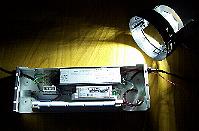
This article, provided by the British Cable Association (BCA) provides a brief but concise explanation of the changes following the issue of the BS EN 50525 series of standards, for wiring and flexible cables up to and including 450/750V. The full series was published on 30th September 2011.

BS 5266-1 has been fully revised to harmonise with European standards and UK legislation. The aim of the recommendations is to encourage application uniformity, based on providing adequate safety to building occupants should there be interruption to the normal lighting for any reason. They also take into account hazard levels and the necessary familiarity of building occupants with the premises concerned. The standard recognises that, as well ensuring a safe unobstructed way of escape from a building at all times, it is essential that emergency lighting enables the immediate location and operation of fire alarm call points and fire-fighting equipment. BS 5266-1 also aims to minimise the possibility of people panicking in enclosed spaces, such as lifts. Now that compliance is judged using risk assessments, ICEL, the emergency lighting arm of the Lighting Industry Association (LIA), provides guidance to the revisions, and to the action that should be taken concerning existing non-compliant sites.

Does your installation comply with the fire safety engineering requirements? Help ensure compliance using FTP120 fire resistant power and control cable systems for life safety and fire fighting applications, says Draka, in this PDF document, which also provides typical power applications within BS 8519-2010.
2013-2025 © Doesitcomply UK. ALL Rights Reserved. Privacy Policy | Terms of Service